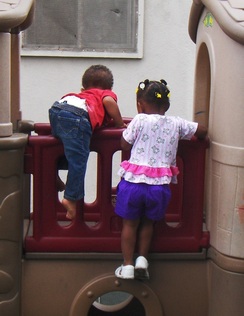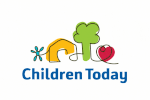|
By Elia Rocha The 2014 federal poverty guidelines considers a family of three earning $19,790 or less as living in poverty. That translates to an hourly wage of $9.51 for a full-time worker. The minimum wage in California is $9.00 per hour, raised this past July 1st from $8.00 per hour. In LA County, to be making a living wage, – meaning earning enough to maintain a safe, decent standard of living within the community – our same full-time worker has to make between $21.62 and $27.15 per hour. The average fair market rent for a two bedroom apartment in Long Beach is about $1,400 per month. A full-time minimum wage earner would have to spend nearly 90% of their income on rent alone. Child care in Los Angeles County can cost anywhere between $9,000 per year for preschool to $13,000 for infant care. There again, our full-time worker would spend between 48-69% of their income on child care. We haven’t even touched on food, transportation, health care, etc. Obviously, the dollars don’t stretch that far; the math doesn't add up. Of course, there are subsidies and entitlements; programs that help pay for housing, child care, food, and health care. And, nearly all of the families we work with receive some combination of these supports. Still, since nearly all of the families we work with have lived in shelters, motels, garages, cars, or on the street, and since nearly all of these same families have dealt with food insecurity and infrequent medical care, there are undoubtedly some substantial holes in our safety net.
I won’t talk about what’s right or wrong, who’s to blame, or even the role that government and non-profit organizations should play in addressing the serious issues surrounding poverty (since I work for a non-profit organization which operates in part from government funding, I suspect my opinion on this is probably pretty clear). I do want to try to show, from our point of view, what poverty looks like in a real, day in, day out, dollars and cents way; how it limits choices and opportunities, and how the families we work with find ways to endure, work around, and overcome. Creating Community from Scratch A large number of the families we serve come to us from domestic violence shelters. After enduring prolonged abuse from their partner and parent, these families have had to flee for their safety, leaving behind most of their possessions to move to a shelter, usually some distance away from where they lived. Along the way, they’ve lost their source of income (if the abuser was the breadwinner or if the survivor had to leave their work behind) – and in many instances, they've lost the social supports they had in friends and family within their community. So, the women in these shelters turn to each other. Out of necessity, and bonded through a shared trauma, they become one another’s emergency contact, share child care duties, and pool their resources to lift each other up and out. I Take Three Buses to Get Here More often than not, the reason that many of the families we work with falter on their way towards housing and financial stability is transportation. When you don’t have enough money for the bus or you can’t afford gas or repairs for the car, you can’t get your children to their child care, you don’t make it to school on time, you miss out on that job interview. Transportation issues may be a temporary inconvenience for some of us, but for these families, they can be the hinge from which their plans for the future swing; they can make all the difference between getting there and not getting there. Priced Out of Long-Term Planning It’s easy to become short-sighted when you are living in poverty. If all of your resources and energy are focused on putting one foot in front of the other, on dealing with the immediate crises impacting your family, there won’t be much left to plan for a more stable life. More than that, it is easy to believe that you’ll never climb out of the hole you’re in. So, when families do manage to climb up and out, when they exercise their will to work towards a better future that is really hard to see through all the obstacles in their path, they define success and become examples that I believe we can all learn from. To read more about the the long-term effects of poverty, check out this terrific NPR article, titled This Is Your Stressed-Out Brain on Scarcity. By Cheryl Ichikawa
Life is a series of experiences… some good, some bad and some life-changing. Resilience is our response to those life-changing situations. It’s our ability to see beyond the now, to understand that triumphs are often born out of tragedy, that challenges provide us with opportunities to grow, and that we have the power to decide the path we take in life. I have come to those crossroads many times in my life and sometimes I took the wrong path and had to deal with the consequences. For me, there came a point when I needed to decide whether to stay on the path leading to nowhere or do the work and find something better. I was tired of wasting time being sad, angry and resentful. So, I decided to let go of my sadness and embrace the possibilities of the future. Along the way I met Dora and she introduced me to Children Today. It was here that I gained a deeper understanding about myself and my life. In Dora’s blog post, Resilience & the Protective Factors, she talks about three supportive factors that nurture an individual’s ability to cope with stressful situations. She talks about the importance of family, community and self-esteem. For me, dealing with death at 16, was traumatic. Fear, doubt, anger and deep sadness consumed me for a very long time. It left me feeling helpless, hopeless and very alone. Talking about it was not an option, so I dealt with it quietly. For many years, I pretended that everything was fine. Until it wasn’t. The “protective factors” that Dora talked about enabled me to find my way back to the path that I wanted to travel. As a teacher, mother and victim of trauma, I know how resilient children can be. However, I also understand that in order for them to successfully deal with all the challenges in life, they need to have a strong sense of who they are and what they are capable of. For these children (and families), the role that we play in their lives is foundational. We work hard at nurturing their ability to trust themselves and other people. We support their need to be independent, curious, and at times, very silly. We teach them that learning grows out of making lots of mistakes and some really big messes. We offer them alternative ways of dealing with conflict, allowing them to explore their options and helping them find a satisfactory solution. We embrace them for who they are and what they are trying to become. We honor their stories and their life experiences. But above all, we hope that our children and their families find peace and happiness in life.  Keep climbing, you'll get there! Keep climbing, you'll get there! By Dora Jacildo Children Today is in the business of resilience. Our top priority is to increase the “protective factors”- attributes in individuals that help them deal more effectively with stressful events- that contribute to children’s ability to cope with very difficult situations. The individualized attention that our teaching staff give children is designed to increase their competence and confidence. The heightened focus on social/emotional well-being is intentional as is our carefully honed ability to form meaningful relationships with the children in our care. We know that we play a critical role in helping children grow into successful and caring adults. The lessons they will learn while at our Play House programs will serve them well into their futures. Resilience has been describe as “the ability to cope successfully no matter what hurdles one encounters and the ability to steer through serious life challenges and find ways to bounce back and to thrive.” We know that every one of us is born with the capacity for resilience and individuals who respond to difficult life situations with resilience are healthier and live longer, are happier in their relationships, are more successful in school and work, and are less likely to get depressed. We come into our work with a clear understanding of the protective factors that contribute to a child’s ability to become resilient and make increasing those factors part of our service delivery model. Protective factors fall into three categories: factors within the individual, factors within the family, and factors within the community. (Challenging Behavior in Young Children, 2007) Individual Resilient children are sociable. They have the ability to engage the people around them in a positive way. Because they get lots of practice socializing, they have good communication skills, and they tend to be flexible and empathetic. These children are able to plan, to think critically and creatively, and to foresee consequences. They know how to ask for help, too. They believe in themselves and are able to take charge of their own lives. They are independent, competent, self-confident, and self-reliant. They can control their impulses and do what needs to be done, even in difficult surroundings. These children also have varied talents, interests, activities, and coping strategies. They choose environments that reinforce their dispositions and reward their competencies. And, they ascribe their success to their own efforts and abilities, not sheer luck. Above all, they are optimists. They have goals and aspirations. They believe in achievement and are motivated to persevere and succeed. Family The most important protective factor of all is a competent, caring person who is absolutely committed to the child, whom the child can love and trust in return. Children need to have at least one loving and available person who supports and accepts them unconditionally. When a parent or guardian is unable to fulfill this role, another adult in the child’s life can satisfy this need. It also helps when families have high expectations and give children the support they need to fulfill those expectations. Community When children receive support from outside the family, they have a chance to feel connected to other people and the core values of the community. Community support comes to the child in the form of relationships. Like a parent, caring and competent teachers, neighbors, or friends can act as positive role models and make a child feel loved and valued. By believing in the child, expecting a lot from him, and supporting him as he extends his reach, a caring adult can help him to believe in himself and to develop competence and confidence. A caring adult can also help a child expand his ability to cope with stress by creating a supportive environment and gradually enlarging the challenges he must face. It helps if a child’s school is a warm, safe, and predictable place, with consistent teachers, peers, schedules, and limit-setting. When a child knows where to go, what to do, and who will take care of him, he is free to be himself and to focus on learning. Children enrolled in our programs are guaranteed that they will have a sense of belonging, they will have a primary caregiver who is absolutely crazy about and committed to them, and they will develop the skills necessary to increase their self-esteem and self-concept. They will be protected, loved, and nurtured in a way that openly communicates to them that they are important in this community and they have valuable contributions to make. |
AuthorVarious members of the Children Today staff contribute to these blog posts. Archives
July 2024
Categories |
